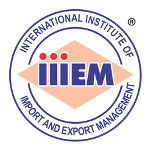Selecting the Right Country (or Market) to Export your Product
Country selection is one of the most crucial steps in international trade, as it determines the success and sustainability of an export business.
Choosing the right country helps exporters identify markets where demand for their product exists, the business environment is stable, and trade regulations are favorable.
A well-chosen country minimizes risks related to payments, logistics, and compliance, while maximizing profitability and long-term relationships.
On the other hand, exporting to the wrong country—one with political instability, poor financial systems, or unfavorable trade policies—can lead to delays, losses, and even non-payment.
Therefore, a systematic country selection process ensures that the exporter allocates resources efficiently and builds a strong international presence in markets that align with their product potential and business strategy.
While the terms country and market are often used interchangeably in international trade, they have a slight difference.
Example: I am exporting my product to Germany, and Europe is my market.
After one has finalized the product, it is time to select a country or a market to export it.
Selecting a country to export product – Step by Step process:
Finding whether a country is suitable for your product is one of the first and most important steps before exporting. It means checking if that country has demand, affordability, easy trade access, and low risks for your business.
Here’s a simple step-by-step list with clear explanations and an example at the end.
1. Check Product Demand
What to do:
See if people or businesses in that country actually need or buy your product.
How to check:
Use trade data websites like Trade Map, or India Trade Portal to see how much of your product is imported by that country.
Example: If you make cotton tote bags, and you see that France and Germany import large quantities of eco-friendly bags, it means there’s demand.
2. Study the Market Trend
What to do:
Look for whether the demand is growing, stable, or declining.
How to check:
Search online for “Market trend for [your product] in [country]”. Reports from Tridge, Statista, or Mordor Intelligence are helpful.
Example: If data shows that Germany’s eco-friendly bag imports are rising 15% each year, that’s a positive trend.
3. Analyze Competition
What to do:
Find out who else is already selling the same product there — local makers or exporters from other countries.
How to check:
Check import statistics or visit B2B portals like Alibaba, Global Sources, or TradeIndia to see competing suppliers.
Example: If China and Bangladesh are already big exporters of tote bags to Germany, you’ll need to find a niche (e.g., premium handmade cotton bags).
4. Study Import Duties and Trade Barriers
What to do:
Check how much import tax (duty) that country charges on your product.
How to check:
Visit https://macmap.org (Market Access Map by ITC) or India Trade Portal → Market Access → Tariff Finder / Import Duty in the Buyer’s Country
Example: If Germany’s import duty on cotton bags is 0% under the EU GSP (Generalized System of Preferences), that’s a cost advantage.
5. Analyze Pricing and Purchasing Power
What to do:
Check if buyers can afford your product and what price they usually pay.
How to check:
See retail prices online on Amazon or local marketplaces in that country.
Example: If eco-bags in Germany retail for ₹600 each and you can supply at ₹250, you’re competitively priced.
6. Review Cultural Suitability
What to do:
See if your product fits the local culture, climate, and market trends.
Example: Exporting woolen shawls to tropical countries may not make sense. Similarly, some countries ban plastic packaging or require eco-labels.
7. Check for Trade Agreements
What to do:
Find out if India has a Free Trade Agreement (FTA) with that country — it helps reduce tariffs and paperwork.
Example: India has trade benefits with Japan under the CEPA, which helps tempt buyers to procure products from India without import duties.
There are a few more considerations before one shortlists countries or market:
Check the following:
- Distance between Loading port and destination port
- Type of packaging norms the buyer’s country has
- Mode of transport you are using
- Political and economic stability of the buyer’s country
Unlike the domestic business, in International Trade one needs to follow the product selection and the right market selection. This is very important.
Success in international trade will depend upon
- Selection of the right product
- Procurement of the product from the wholesaler
- Selecting the right country or the market
Happy Exporting
